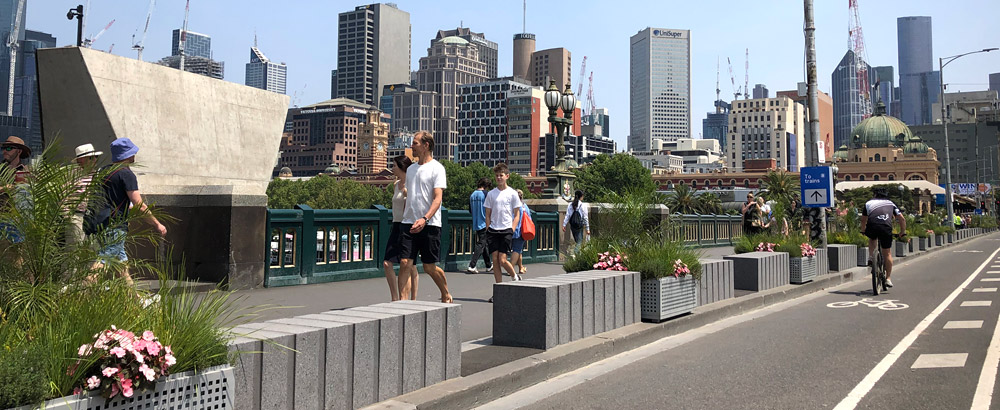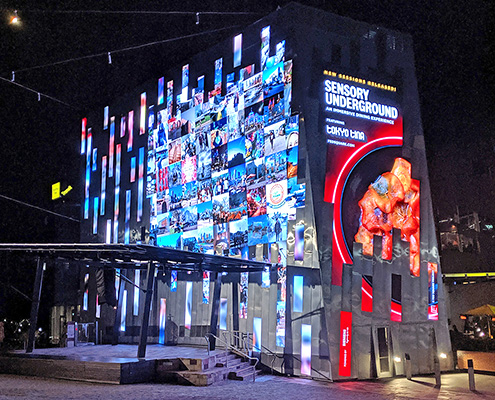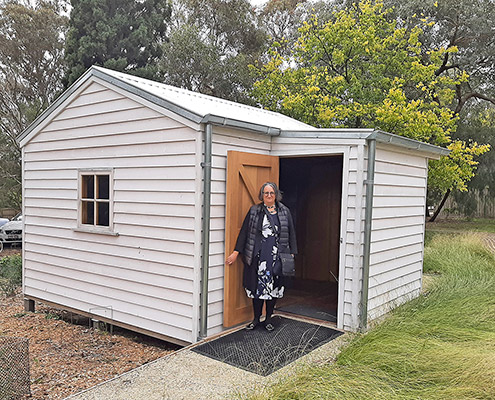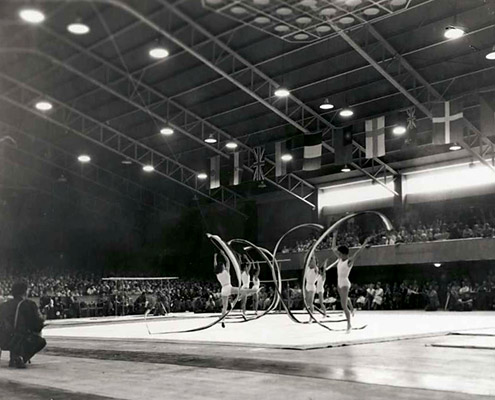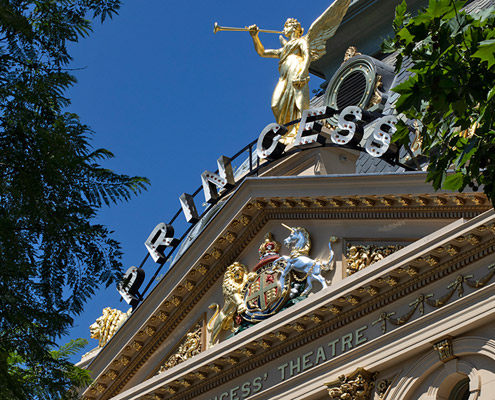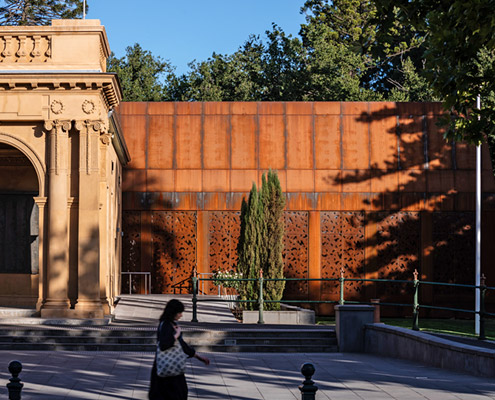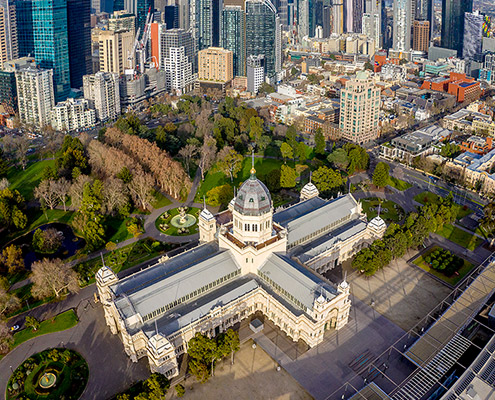
Princes Bridge is located on the lands of the Wurundjeri people of the Kulin nations
The installation of crash barriers on Melbourne’s Princes Bridge was one of a series of protection-measure projects instigated by the state and federal governments in response to recent serious incidents. The significance of the bridge — as a gateway to the centre of Melbourne and in heritage terms — led to concern that mitigation measures against errant vehicles should be in keeping with the setting. We worked collaboratively with protection engineer Thornton Tomasetti and Melbourne City Council to achieve a dignified subtle solution.
Princes Bridge was designed by John Grainger and constructed in 1886-88. Lovell Chen has been supervising repairs to its stonework for a number of years, and at the time the crash barrier project came up, we were providing heritage advice and assistance with permits. We met with the project team and contributed to the decision making on scale, materiality and aesthetics.
Roadside crash blocks need a certain amount of mass to be effective but installing them on a bridge has its limitations. The engineers had to work to the weight limits of the spans and minimise load transfer to the structure should there be an impact. In addition, the nature of the bridge’s construction limits the possibility of embedding bollards into the deck in the conventional way. The team developed a low key approach, using specially designed shallow-mounted cast blocks the colour of bluestone, anchored using a proprietary system, and dimensioned to the scale of street furniture.
Taking inspiration from the distinctive light/shadow/light/shadow rhythm of the bridge’s parapets, and taking advantage of the varied finishes made possible by the use of casting, a pinstripe effect of shallow grooves has been cast into the blocks giving them texture and rhythm. The full effect jumps to life in full sun, as the bridge is oriented north-south, creating dramatic shadows on the blocks and on the deck, just as the parapets do.
Thornton Tomasetti engineered the blocks, which were detailed and installed by Melbourne City Council.
photo : courtesy Thornton Tomasetti

